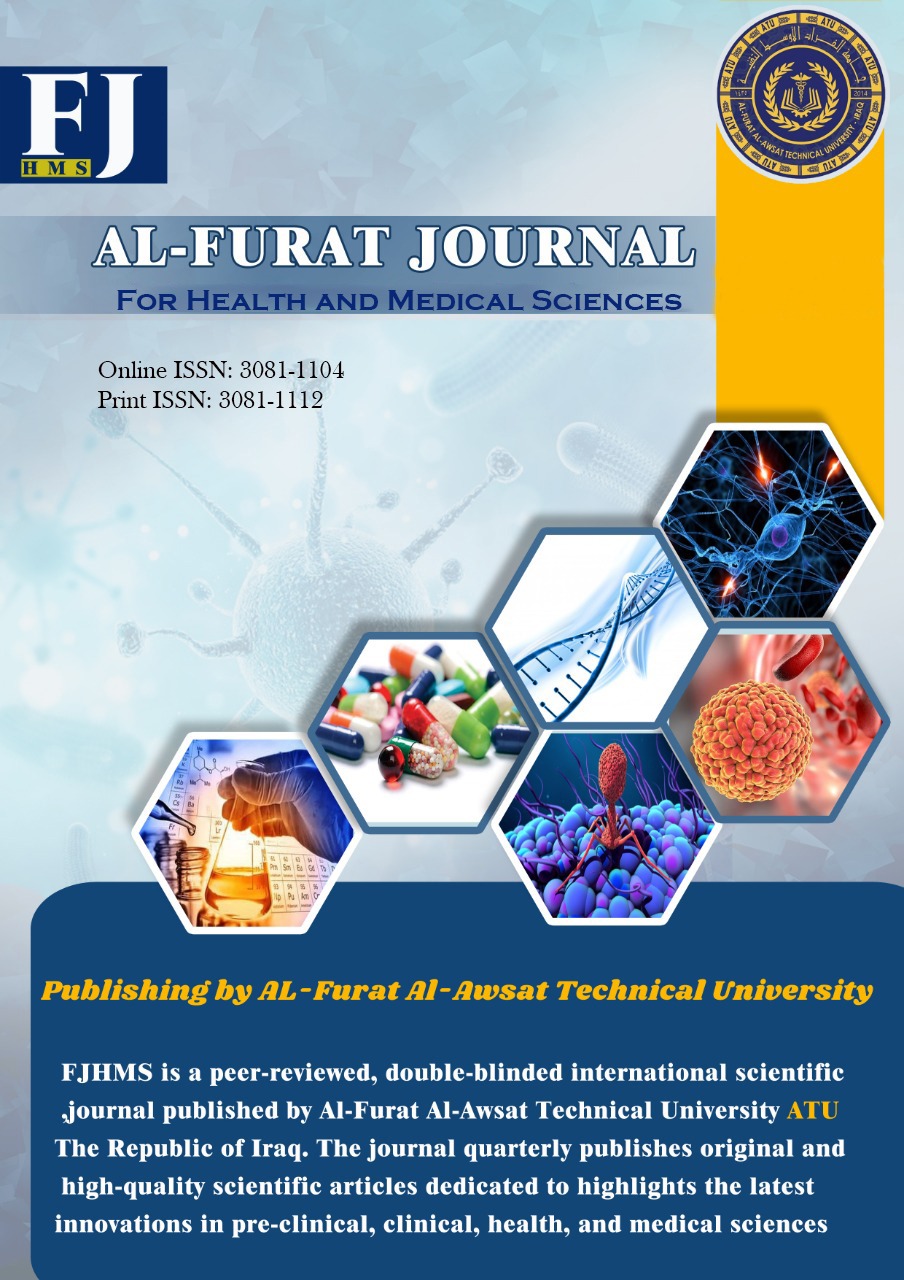Association of IL-6 and IL-8 biomarker with hepatitis B virus in Iraqi patients
DOI:
https://doi.org/10.46649/abd3yk52Keywords:
Hepatitis B, Immunology, IL-6, IL-8.Abstract
Background: Hepatitis B virus (HBV) infection is a global health burden that contributes to liver inflammation, fibrosis, and hepatocellular carcinoma. Chemokines, such as IL-6 and IL-8, play critical roles in immune regulation, but their expression patterns and associations with HBV progression in Iraqi patients are poorly understood. Objectives: This study aimed to evaluate the potential association between serum concentrations of the biomarkers IL-6 and IL-8, and HBV infection among Iraqi patients.
Methods: A case-control study was conducted from September 2024 to February 2025, involving 100 participants (60 patients with HBV and 40 healthy controls) from the Al-Najaf Public Health Laboratory. Serum levels of IL-6 and IL-8 were quantified by ELISA.
Result: The current study revealed that the infection rate was in the age (20-70 years). HBV patients exhibited significantly elevated levels of IL-6 (The Mean±SE of IL-6 for patients group (10.591 ± 2.194), and the control group (1.307±0.285) with signtificant difference between two group (p value 0.0116).) and IL-8 (mean of patients group (227.006± 13.359) ), and the control group(82.410±9.676) With high significant difference betwen two group at P value < 0.0001)
Conclusion: This study demonstrated that the serum levels of IL-6 and IL-8 were significantly elevated in Iraqi patients with HBV. These findings highlight the potential clinical utility of chemokine profiling for managing HBV infection and advancing targeted therapeutic strategies
Downloads
Published
Issue
Section
License
The Corresponding Author, with the consent of all coauthors, hereby transfers to the FJHMS the copyright ownership in referenced Article, including all versions in any format now known or the hereafter developed. If the Article is not accepted by FJHMS or withdrawn prior to acceptance, this transfer will be null and void.
In order for your article to be distributed as widely as possible your grant the FJHMS an exclusive right to:
- Publish, reproduce, distribute, display, and store the Article in all forms, formats, and media known or later developed (including without limitation in print, digital, and electronic form) throughout the world;
- Translate the Article into other languages, create adaptations, summaries or extracts of the Article or other derivative works based on the Article and exercise all of the rights set forth in (a) above in such translations, adaptations, summaries, extracts, and derivative works;
- License others to do any or all of the above
All accepted Articles become the property of FJHMS and may not be published elsewhere without written permission of the FJHMS





